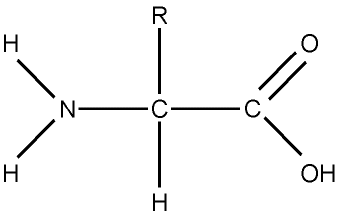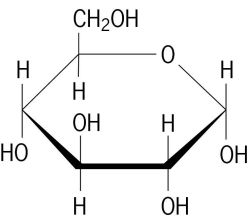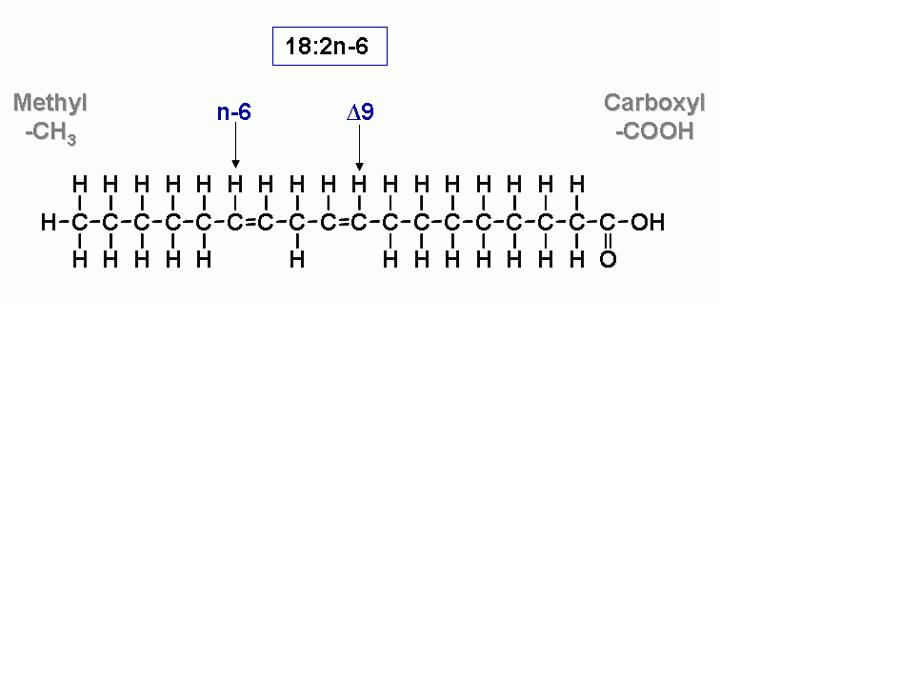Fundamental Of Biochemistry Quiz Questions And Answers
(158).jpg)
We welcome you to this super fun & informative fundamental of biochemistry quiz questions and answers. Are you ready to test your knowledge and learn new, exciting concepts of biochemistry? Then our cool quiz is just what you need! All the questions are simple MCQ-based questions, and you are expected to pick the correct option amongst the four choices. Please make sure to read all the questions very carefully before answering. All the questions in the quiz are compulsory, and your score depends on how many you get correct. The test has no time limit. Have fun!
- 1.
Characteristic(s) of carbon that contribute to its ability to form diverse organic molecules include
- A.
Ability to bond up to four other atoms
- B.
Capacity to form single and double bonds
- C.
Ability to bond and form branched skeletons
- D.
All of the above
Correct Answer
D. All of the aboveExplanation
The correct answer is "all of the above." Carbon's ability to bond up to four other atoms allows it to form complex molecules with a variety of atoms. Its capacity to form single and double bonds provides flexibility in bonding arrangements, leading to different molecular structures. Additionally, carbon's ability to bond and form branched skeletons contributes to the diversity of organic molecules.Rate this question:
-
- 2.
If a lipid is a solid at room temperature, you would predict
- A.
All lipids are solids at room temperature
- B.
The lipid is saturated
- C.
The lipid is unsaturated
- D.
There is not enough information
Correct Answer
B. The lipid is saturatedExplanation
If a lipid is a solid at room temperature, it indicates that the lipid is saturated. Saturated lipids have fatty acid chains that are fully saturated with hydrogen atoms, resulting in a straight and rigid structure. This arrangement allows the lipids to pack closely together, leading to a solid state at room temperature. Unsaturated lipids, on the other hand, have double bonds in their fatty acid chains, causing a kink in their structure. This prevents them from packing tightly, resulting in a liquid state at room temperature. Therefore, the given information suggests that the lipid in question is saturated.Rate this question:
-
- 3.
Which, if any, of the following choices does not properly pair an organic compound with one of its building blocks?
- A.
Nucleic acid -- nucleotide
- B.
Polysaccharide -- monosaccharide
- C.
Fat -- peptide
- D.
All are paired correctly
Correct Answer
C. Fat -- peptideExplanation
The correct answer is "fat -- peptide" because fats are composed of fatty acids and glycerol, not peptides. Peptides are made up of amino acids and are the building blocks of proteins.Rate this question:
-
- 4.
A scientist is studying the metabolism of proteins in yeast ants to follow the formation of proteins from its earliest point. In her experiment, she will feed the yeast radioactive nutrients and follow the fate of the radioactivity in the cells. Which of the following atoms will allow her to exclusively follow proteins in the cell?
- A.
Radioactive nitrogen
- B.
Radioactive carbon
- C.
Radioactive oxygen
- D.
Radioactive sulfur
Correct Answer
A. Radioactive nitrogenExplanation
The scientist wants to exclusively follow proteins in the cell, so she needs to use a radioactive atom that is specifically incorporated into proteins. Nitrogen is an essential component of amino acids, which are the building blocks of proteins. Therefore, by using radioactive nitrogen, the scientist can track the fate of the radioactivity specifically in proteins and study their metabolism in yeast ants.Rate this question:
-
- 5.
Fat accumulates in our bodies when we overeat. This is because ________.
- A.
Lipids are found only in plants
- B.
Lipids are a form of long-term energy storage
- C.
Lipids are important for cell membranes
- D.
Lipids have enzymatic activity
Correct Answer
B. Lipids are a form of long-term energy storageExplanation
Fat accumulates in our bodies when we overeat because lipids are a form of long-term energy storage. When we consume more calories than our body needs for immediate energy, the excess calories are converted into lipids (fat) and stored in adipose tissue for later use. Lipids serve as a concentrated source of energy, providing more than double the energy per gram compared to carbohydrates or proteins. This energy storage mechanism allows our bodies to have a reserve of fuel for times when food is scarce or when we need extra energy.Rate this question:
-
- 6.
Carbohydrates ____________.
- A.
Have the general chemical formula CH2O
- B.
Function as an energy source
- C.
Can exist as monomers (monosaccharides) and polymers (polysaccharides)
- D.
All of the above
Correct Answer
D. All of the aboveExplanation
Carbohydrates have the general chemical formula CH2O, meaning that for every carbon atom in a carbohydrate, there are two hydrogen atoms and one oxygen atom. They function as an energy source in the body, providing fuel for various cellular processes. Carbohydrates can exist as monomers, which are single sugar molecules known as monosaccharides, and as polymers, which are larger molecules made up of multiple sugar units called polysaccharides. Therefore, all of the given statements about carbohydrates are correct.Rate this question:
-
- 7.
Liquid water shows __________.
- A.
Heat resistance
- B.
Polarity
- C.
Cohesion
- D.
All of the above
Correct Answer
D. All of the aboveExplanation
Liquid water shows all of the above characteristics: heat resistance, polarity, and cohesion. Heat resistance refers to its ability to withstand high temperatures without evaporating or decomposing easily. Polarity describes the separation of positive and negative charges within the water molecule, which allows it to form hydrogen bonds with other molecules. Cohesion refers to the attraction between water molecules, which allows them to stick together and form drops or be pulled up through narrow tubes.Rate this question:
-
- 8.
Atoms share electrons unequally in a(n) ___________ bond.
- A.
Polar covalent
- B.
Hydrogen
- C.
Ionic
- D.
Non polar covalent
Correct Answer
A. Polar covalentExplanation
In a polar covalent bond, atoms share electrons unequally. This means that one atom has a stronger pull on the shared electrons, resulting in a partial positive charge on that atom and a partial negative charge on the other atom. This unequal sharing of electrons creates a polarity in the bond.Rate this question:
-
- 9.
How are macromolecules synthesized?
- A.
Hydrolysis of polymers
- B.
Hydrolysis of monomers
- C.
Dehydration using monomers
- D.
Dehydration using polymers
Correct Answer
C. Dehydration using monomersExplanation
Macromolecules are synthesized through a process called dehydration synthesis, where monomers are joined together to form polymers by removing a water molecule. This process involves the formation of covalent bonds between the monomers, resulting in the growth of the polymer chain. Hydrolysis, on the other hand, is the reverse process where polymers are broken down into monomers by adding a water molecule. Therefore, the correct answer is dehydration using monomers.Rate this question:
-
- 10.
The molecule H2SO4 has a solution that would be _________.
- A.
Acidic, as there are more OH- than H+ ions
- B.
Acidic, as there are more H+ than OH- ions
- C.
Basic, as there are more OH- than H+ ions
- D.
Basic, as there are more H+ than OH- ions
Correct Answer
B. Acidic, as there are more H+ than OH- ionsExplanation
The correct answer is acidic because H2SO4 is a strong acid that dissociates completely in water to form H+ ions and SO4^2- ions. The presence of H+ ions in the solution makes it acidic.Rate this question:
-
- 11.
The tendency of water molecules to stick together _________.
- A.
Acts to moderate temperature
- B.
Provides surface tension that allows insects to walk on water
- C.
Keeps waver moving through the vessels in a tree trunk
- D.
All of the above
Correct Answer
D. All of the aboveExplanation
Water molecules have a strong tendency to stick together due to hydrogen bonding. This property allows water to act as a temperature moderator, as the energy needed to break the hydrogen bonds absorbs heat and prevents rapid temperature changes. Additionally, the cohesion of water molecules creates surface tension, which allows small insects to walk on water. Lastly, water's cohesive forces enable it to move through the vessels in a tree trunk, facilitating the transport of water and nutrients. Therefore, all of the given options are correct explanations of the tendency of water molecules to stick together.Rate this question:
-
- 12.
What type of bond is joining the two hydrogen atoms?
- A.
Hydrogen
- B.
Covalent
- C.
Hydrogen
- D.
Hydrophobic
Correct Answer
B. CovalentExplanation
The correct answer is covalent. Covalent bonds occur when atoms share electrons in order to achieve a stable electron configuration. In the case of hydrogen, each hydrogen atom has one electron in its outer shell, and by sharing these electrons, both atoms can achieve a full outer shell. This sharing of electrons creates a strong bond between the two hydrogen atoms, known as a covalent bond.Rate this question:
-
- 13.
Isotopes are __________.
- A.
Atoms with unequal number of protons and neutrons
- B.
Atoms with equal number of protons and electrons
- C.
Atoms with same number of protons, but different number of neutrons
- D.
None of the above
Correct Answer
C. Atoms with same number of protons, but different number of neutronsExplanation
Isotopes are atoms with the same number of protons, but different numbers of neutrons. This means that isotopes have the same atomic number (which is determined by the number of protons) but different mass numbers (which is determined by the total number of protons and neutrons). Isotopes of an element have similar chemical properties but may have different physical properties due to their differing masses.Rate this question:
-
- 14.
Which of these is NOT a lipid?
- A.
Cholesterol
- B.
Wax
- C.
Steroids
- D.
RNA
Correct Answer
D. RNAExplanation
RNA is not a lipid because it is a nucleic acid, not a fatty substance. Lipids are hydrophobic molecules that include substances like cholesterol, waxes, and steroids. RNA, on the other hand, is a nucleic acid that plays a crucial role in protein synthesis and carries genetic information. It is composed of nucleotides, not fatty acids, and does not possess the characteristic properties of lipids.Rate this question:
-
- 15.
Carbohydrates are mainly used in our bodies:
- A.
Structural molecules, such as hair
- B.
For membrane construction
- C.
As fuel
- D.
For building genetic material
Correct Answer
C. As fuelExplanation
Carbohydrates are primarily used in our bodies as fuel. They are broken down into glucose, which is then used by cells to produce energy through a process called cellular respiration. This energy is essential for various bodily functions, including muscle contraction, brain function, and maintaining body temperature. While carbohydrates can also serve as structural molecules in certain tissues like hair, their primary role is to provide energy for the body's metabolic processes.Rate this question:
-
- 16.
What is the role of DNA and RNA in cells?
- A.
Preserving and expressing genetic information
- B.
Storing energy in fat cells
- C.
Speeding up chemical reactions
- D.
Forming long fibers, like hair
Correct Answer
A. Preserving and expressing genetic informationExplanation
DNA and RNA play a crucial role in preserving and expressing genetic information in cells. DNA carries the genetic instructions that determine the traits and characteristics of an organism, while RNA helps in the process of translating these instructions into proteins. DNA acts as a template for the synthesis of RNA, which then carries the genetic code to the ribosomes where proteins are produced. This process is essential for the proper functioning and development of cells, as well as the inheritance of traits from one generation to another.Rate this question:
-
- 17.
An acid is characterized as a substance that ____________.
- A.
Removes hydrogen ions from solutions
- B.
Donates hydrogen ions to solutions
- C.
Is a versatile solvent
- D.
Forms covalent bonds with other substances
Correct Answer
B. Donates hydrogen ions to solutionsExplanation
An acid is characterized as a substance that donates hydrogen ions to solutions. This is because acids are capable of releasing hydrogen ions (H+) when dissolved in water, which then interact with water molecules to form hydronium ions (H3O+). This process is known as ionization or dissociation. The ability of acids to donate hydrogen ions is what gives them their acidic properties, such as the ability to react with bases and cause a sour taste.Rate this question:
-
- 18.
In a hydrogen bond, a covalently bound hydrogen atom weakly attracts a(n) _________ atom in a different molecule or a different region of the same molecule
- A.
Electropositive
- B.
Electronegative
- C.
Electromagnetic
- D.
Neutral
Correct Answer
B. ElectronegativeExplanation
In a hydrogen bond, a covalently bound hydrogen atom weakly attracts an electronegative atom in a different molecule or a different region of the same molecule. Electronegative atoms have a higher affinity for electrons, causing them to pull the shared electron pair in the covalent bond closer to themselves. This creates a partial positive charge on the hydrogen atom, which then forms a weak attraction with the electronegative atom. This type of bond is important in various biological and chemical processes, such as the binding of DNA strands and the structure of proteins.Rate this question:
-
- 19.
Proteins are polymers of __________.
- A.
Nucleotides
- B.
Hydrocarbons
- C.
Glycerol
- D.
Amino acids
Correct Answer
D. Amino acidsExplanation
Proteins are polymers of amino acids. Amino acids are the building blocks of proteins, and they are linked together through peptide bonds to form long chains. These chains then fold into specific three-dimensional structures, which determine the protein's function. Nucleotides are the building blocks of nucleic acids (DNA and RNA), hydrocarbons are organic compounds consisting of only hydrogen and carbon atoms, and glycerol is a component of lipids. Therefore, amino acids are the correct answer as they are specifically associated with the formation of proteins.Rate this question:
-
- 20.
The atomic mass of an element is a weighted average of all of the different ____________ of Lithium.
- A.
Ions
- B.
Isomers
- C.
Isotopes
- D.
Compounds
Correct Answer
C. IsotopesExplanation
Isotopes are variants of an element with the same number of protons but different numbers of neutrons. The atomic mass considers the abundance of each isotope in nature, calculating a weighted average. Lithium, for instance, has two stable isotopes, Li-6 and Li-7, contributing to its atomic mass.Rate this question:
-
- 21.
A nucleotide is composed of:
- A.
Phosphate group, nitrogen containing base, and a hydrocarbon
- B.
Glycerol, nitrogen containing base, and a five carbon sugar
- C.
Phosphate group, nitrogen containing base, and a five carbon sugar
- D.
Amino acid, a nitrogen containing base, and a five carbon sugar
Correct Answer
C. Phosphate group, nitrogen containing base, and a five carbon sugarExplanation
A nucleotide is composed of a phosphate group, a nitrogen-containing base, and a five-carbon sugar. The phosphate group provides the backbone of the nucleotide, linking the sugar and the nitrogen-containing base. The nitrogen-containing base can be adenine, guanine, cytosine, or thymine in DNA, or adenine, guanine, cytosine, or uracil in RNA. The five-carbon sugar can be either deoxyribose in DNA or ribose in RNA. Together, these three components make up the structure of a nucleotide, which is the building block of nucleic acids like DNA and RNA.Rate this question:
-
- 22.
- A.
Nucleotide
- B.
Fatty acid
- C.
Simple sugar
- D.
Amino acid
Correct Answer
D. Amino acid -
- 23.
What is the primary function of enzymes in biochemical reactions?
- A.
Energy storage
- B.
Structural support
- C.
Catalyzing chemical reactions
- D.
Transporting molecules
Correct Answer
C. Catalyzing chemical reactionsExplanation
Enzymes are proteins that act as biological catalysts, speeding up chemical reactions in cells. They do this by lowering the activation energy required for the reaction to occur, making processes like digestion, metabolism, and synthesis more efficient.Rate this question:
-
- 24.
- A.
Nucleotide
- B.
Fatty acid
- C.
Simple sugar
- D.
Amino acid
Correct Answer
C. Simple sugar -
- 25.
- A.
Nucleotide
- B.
Fatty acid
- C.
Simple sugar
- D.
Amino acid
Correct Answer
B. Fatty acid -
Quiz Review Timeline +
Our quizzes are rigorously reviewed, monitored and continuously updated by our expert board to maintain accuracy, relevance, and timeliness.
-
Current Version
-
Jan 08, 2024Quiz Edited by
ProProfs Editorial Team -
Oct 13, 2010Quiz Created by
Silverwaves
- Aeronautics Quizzes
- Aerospace Quizzes
- Agricultural Science Quizzes
- Astrology Quizzes
- Astronomy Quizzes
- Atom Quizzes
- Biology Quizzes
- Biomechanics Quizzes
- Biostatistics Quizzes
- Biotechnology Quizzes
- Botany Quizzes
- Branches Of Science Quizzes
- Cytology Quizzes
- Easy Science Quizzes
- Ecology Quizzes
- Electrical Quizzes
- Embryology Quizzes
- Endocrinology Quizzes
- Engineering Quizzes
- Environmental Science Quizzes
- Epidemiology Quizzes
- Experiment Quizzes
- Forestry Quizzes
- Fossil Quizzes
- Gas Quizzes
- General Science Quizzes
- Genetics Quizzes
- Histology Quizzes
- Human Biology Quizzes
- Integrated Science Quizzes
- Invention Quizzes
- Library Science Quizzes
- Lighting Quizzes
- Liquid Quizzes
- Marine Biology Quizzes
- Microbiology Quizzes
- Nature Quizzes
- Neuroscience Quizzes
- Nuclear Science Quizzes
- Oceanography Quizzes
- Physics Quizzes
- Psychology Quizzes
- Science And Technology Quizzes
- Science Glossary Quizzes
- Science Knowledge Quizzes
- Science Practice Quizzes
- Scientific Method Quizzes
- Scientific Notation Quizzes
- Soil Science Quizzes
- Solar System Quizzes
- Solid Quizzes
- Zoology Quizzes
 Back to top
Back to top






